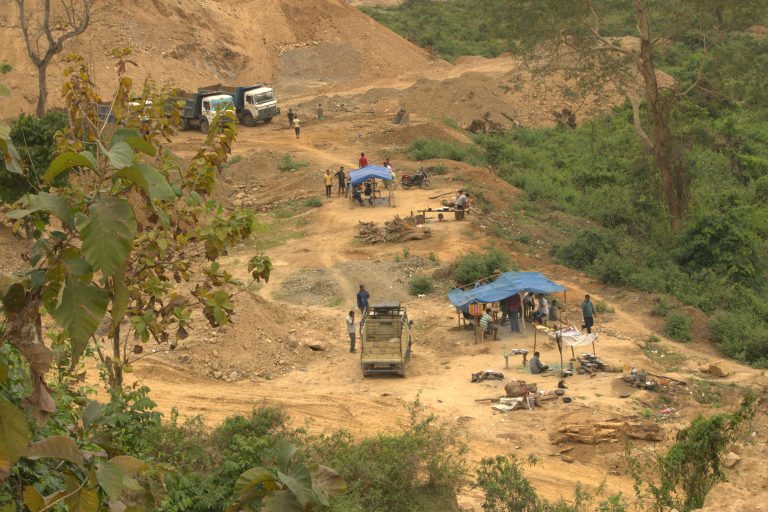By Satyabrat Borah
World Environment Day, observed annually on June 5, serves as a global platform to raise awareness about environmental issues and inspire collective action to protect our planet. Initiated by the United Nations in 1972 during the Stockholm Conference on the Human Environment, this day has since become a cornerstone for promoting sustainable practices and addressing pressing environmental challenges. Each year, World Environment Day focuses on a specific theme, rallying governments, organizations, and individuals to tackle issues such as climate change, pollution, deforestation, and biodiversity loss. The significance of this day lies in its ability to unite people across borders, encouraging them to reflect on their relationship with the environment and take meaningful steps toward its preservation.
The environment is the foundation of life on Earth, providing the resources necessary for human survival, from clean air and water to fertile soil and biodiversity. However, human activities have placed unprecedented pressure on these natural systems. Industrialization, urbanization, and unsustainable consumption patterns have led to environmental degradation, threatening ecosystems and the well-being of future generations. Climate change, driven by greenhouse gas emissions, has caused rising global temperatures, melting ice caps, and extreme weather events like floods, droughts, and hurricanes. Pollution, whether in the form of air, water, or soil contamination, has further exacerbated the crisis, affecting human health and wildlife. World Environment Day serves as a reminder of these challenges and the urgent need to address them through collective responsibility.
In the context of a region like Assam, India, the importance of environmental conservation is particularly pronounced. Assam is renowned for its rich natural heritage, from the mighty Brahmaputra River to its lush forests and biodiversity hotspots like Kaziranga and Manas National Parks. These areas are home to unique species such as the one-horned rhinoceros, Royal Bengal tiger, and numerous migratory birds. However, Assam’s environment faces significant threats due to deforestation, industrialization, and population growth. The Brahmaputra, a lifeline for millions, is increasingly polluted by industrial waste and plastic debris. Urban centers like Guwahati are grappling with air pollution caused by vehicular emissions and unplanned urban expansion. World Environment Day provides an opportunity to highlight these regional issues and mobilize local communities to protect their natural surroundings.
One of the key messages of World Environment Day is the power of individual and collective action. While governments and organizations play a crucial role in enacting policies and implementing large-scale conservation efforts, the participation of ordinary citizens is equally vital. Activities such as tree planting, clean-up drives, and awareness campaigns are commonly organized on this day to engage communities.In Assam, schools, colleges, and local organizations often conduct programs to educate people about the importance of preserving forests, rivers, and wildlife. For instance, efforts to protect Kaziranga National Park from poaching and habitat destruction rely heavily on the involvement of local communities who live in close proximity to these areas. By fostering a sense of ownership, World Environment Day encourages people to take pride in their natural heritage and work toward its preservation.
Pollution remains one of the most pressing environmental challenges globally and locally. Air pollution, caused by industrial emissions, vehicular exhaust, and burning of fossil fuels, has led to respiratory illnesses and reduced air quality in cities worldwide. In Assam, urban areas like Guwahati face similar issues, with air quality indices often reaching unhealthy levels due to traffic congestion and industrial activities. Water pollution is another critical concern, particularly for rivers like the Brahmaputra, which are contaminated by plastic waste, industrial effluents, and untreated sewage. Plastic pollution, in particular, has become a global crisis, with single-use plastics clogging waterways and harming marine life. World Environment Day campaigns often focus on reducing plastic use, promoting recycling, and encouraging the adoption of sustainable alternatives. In Assam, initiatives to clean rivers and promote biodegradable materials are gaining traction, but more concerted efforts are needed to address this issue effectively.
Climate change is another focal point of World Environment Day, as its impacts are felt across the globe. Rising temperatures have led to unpredictable weather patterns, affecting agriculture, water availability, and livelihoods. In Assam, climate change has intensified the frequency and severity of floods, particularly along the Brahmaputra River. These floods displace thousands of people annually, destroy crops, and disrupt local economies. Addressing climate change requires global cooperation to reduce carbon emissions, transition to renewable energy, and promote sustainable land use practices. On a local level, Assam can benefit from reforestation projects, sustainable agriculture, and community-based adaptation strategies. World Environment Day serves as a call to action for governments to implement policies that mitigate climate change while empowering communities to adopt climate-resilient practices.
Biodiversity loss is another critical issue highlighted on World Environment Day. The destruction of habitats, poaching, and invasive species have threatened countless plant and animal species worldwide. In Assam, biodiversity hotspots like Kaziranga and Manas are under pressure from deforestation and human encroachment. The one-horned rhinoceros, a symbol of Assam’s natural heritage, faces threats from poaching, while other species like tigers and elephants are at risk due to habitat loss. Protecting biodiversity requires a multifaceted approach, including stricter enforcement of wildlife protection laws, habitat restoration, and community engagement. World Environment Day provides a platform to educate people about the importance of biodiversity and the role it plays in maintaining ecological balance.
Sustainable development is a key theme that runs through World Environment Day initiatives. Balancing economic growth with environmental protection is a challenge that requires innovative solutions. In Assam, sustainable agriculture practices, such as organic farming, can reduce the reliance on chemical fertilizers and pesticides, which harm soil and water quality. Promoting renewable energy sources, such as solar and wind power, can also help reduce the region’s carbon footprint. Additionally, sustainable tourism in places like Kaziranga and Manas can generate economic opportunities while ensuring that natural habitats are preserved. World Environment Day encourages governments and businesses to adopt sustainable practices that benefit both people and the planet.
Education and awareness are critical components of World Environment Day. By engaging young people, in particular, this day fosters a sense of responsibility toward the environment. In Assam, schools and colleges often organize essay competitions, debates, and rallies to mark the occasion. These activities help instill environmental consciousness in the younger generation, who will play a pivotal role in shaping the future. Community-based organizations also play a vital role in spreading awareness about local environmental issues, such as the need to protect wetlands and forests. By empowering individuals with knowledge, World Environment Day creates a ripple effect, inspiring long-term commitment to environmental stewardship.
At the individual level, small actions can make a significant difference. Reducing energy consumption, conserving water, minimizing waste, and planting trees are simple yet effective ways to contribute to environmental protection. In Assam, traditional practices like using locally sourced materials and promoting organic farming align with sustainable living. Encouraging the use of reusable bags, bottles, and containers can help reduce plastic waste. Community-led initiatives, such as village-level tree planting drives or river clean-up campaigns, demonstrate the power of collective action. World Environment Day inspires individuals to adopt these practices and integrate them into their daily lives.
Government policies and international cooperation are essential for addressing large-scale environmental challenges. In Assam, the state government has launched initiatives like afforestation programs and river conservation projects to combat environmental degradation. However, the success of these initiatives depends on effective implementation and public support. Globally, agreements like the Paris Climate Accord aim to limit global warming and promote sustainable development. World Environment Day serves as a reminder of the importance of these commitments and the need for governments to work together to address shared challenges.
The role of technology in environmental conservation is also worth noting. Innovations such as renewable energy, waste recycling systems, and eco-friendly materials can significantly reduce humanity’s environmental footprint. In Assam, the adoption of solar-powered irrigation systems and biogas plants can support sustainable agriculture and reduce reliance on fossil fuels. World Environment Day highlights the potential of technology to address environmental challenges while emphasizing the need for equitable access to these solutions.
World Environment Day is a powerful reminder of our shared responsibility to protect the planet. For a region like Assam, with its rich natural heritage and unique environmental challenges, this day holds special significance. By addressing issues like pollution, climate change, and biodiversity loss, and by promoting sustainable practices, we can ensure a healthier and more resilient environment. World Environment Day inspires individuals, communities, and governments to work together toward a common goal: preserving the Earth for future generations. Through collective action, awareness, and commitment, we can create a sustainable future where humanity and nature thrive in harmony. This day is not just a celebration but a call to action, urging us to take responsibility for our planet and make a lasting difference.




